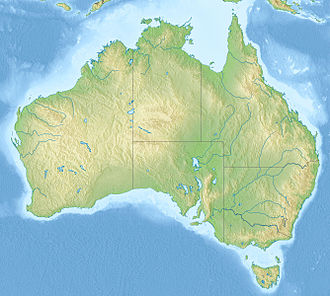| Kokerbin Rock | |
|---|---|
| Kokerbin Hill | |
 Kokerbin Rock in the morning | |
| Highest point | |
| Elevation | 122 m (400 ft) |
| Coordinates | 31°53′20″S117°42′24″E / 31.88898°S 117.706778°E |
| Geography | |
| Location | Shire of Bruce Rock, Wheatbelt, Western Australia |
Kokerbin Rock, also known as Kokerbin Hill, is a granite rock formation located within Kokerbin Nature Reserve in the Wheatbelt region of Western Australia. [1] [2] The area has special significance for the Nyoongar. [3] There are claims that Kokerbin Rock is the third largest monolith in Australia, [1] [2] [4] [5] [6] with Mount Wudinna in South Australia being the second largest and Uluru in the Northern Territory being the largest.
Contents
Kokerbin Nature Reserve was established in 1991, and has an area of 91 hectares (220 acres). [7] It is approximately 40 km (25 mi) east of Quairading and 30 km (19 mi) south of Kellerberrin by road.



